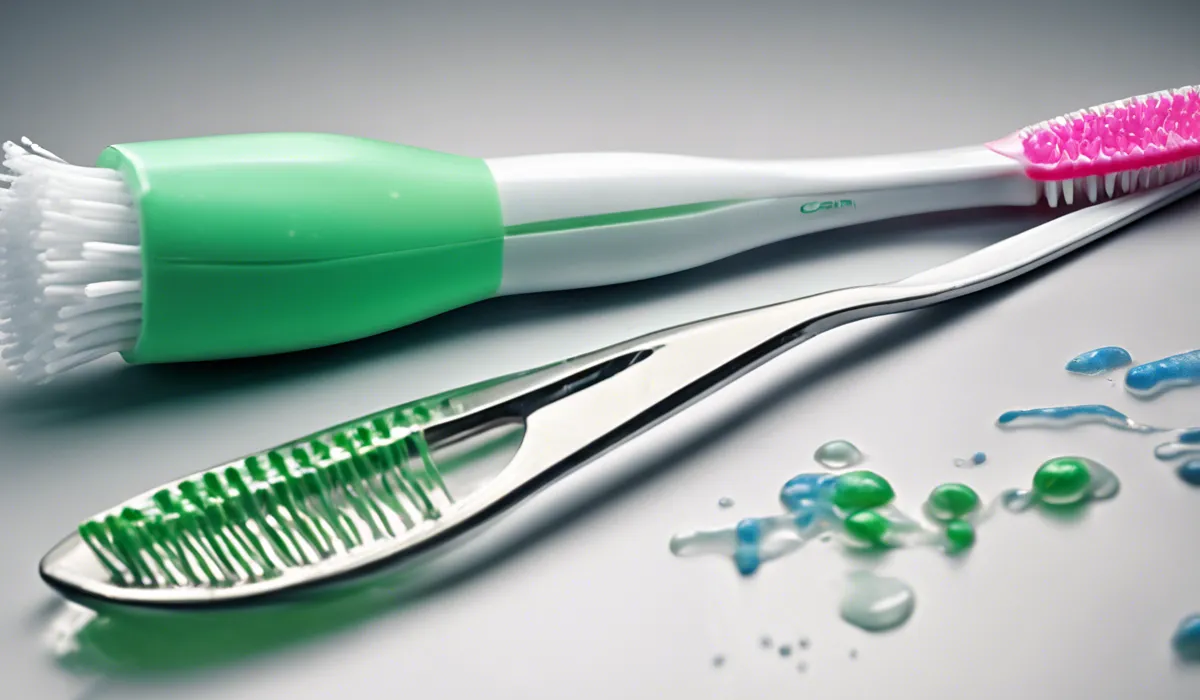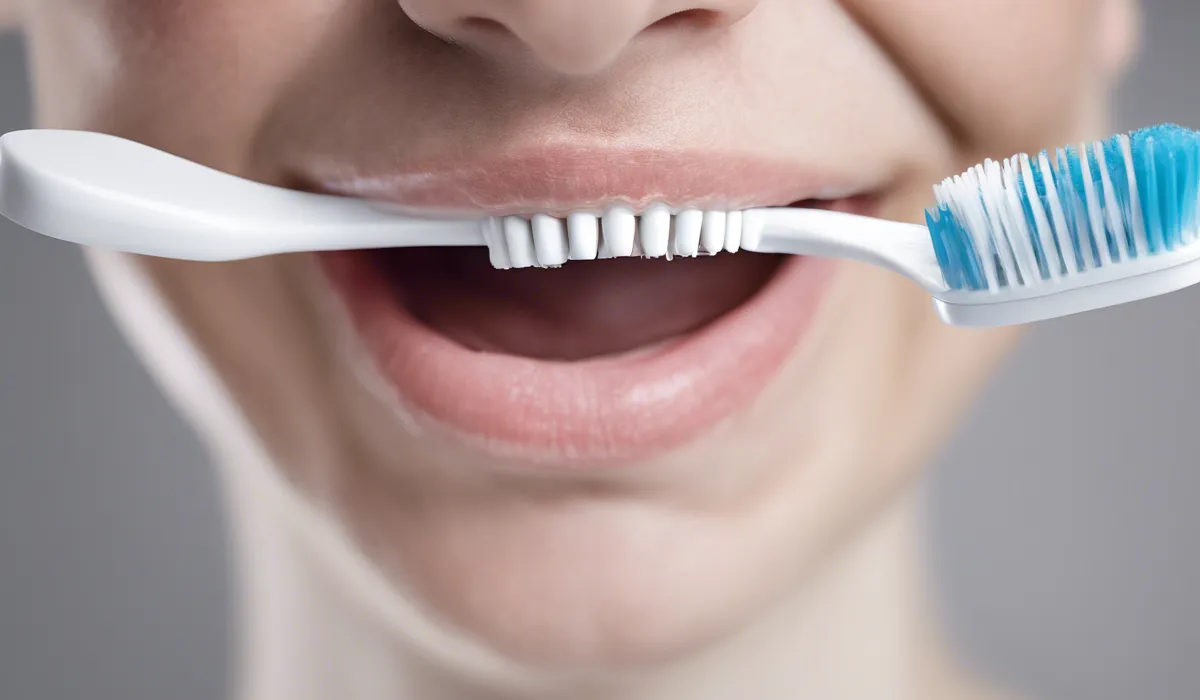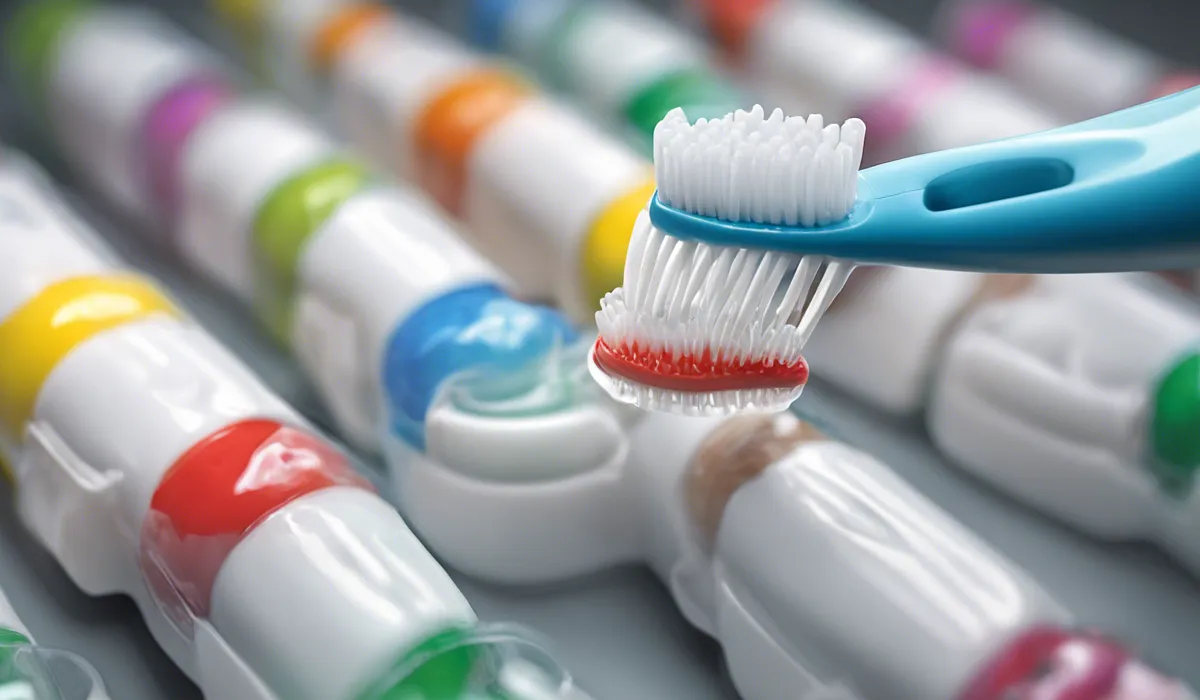Yes, mold on a toothbrush can potentially make you sick. Mold spores can cause respiratory issues or allergic reactions when inhaled. It’s important to replace a moldy toothbrush to prevent health risks.
Understanding Mold on Toothbrushes

Definition and Types of Mold
Mold is a type of fungus that can grow almost anywhere there is moisture and organic material. It reproduces through tiny spores that travel through the air.
Common types of mold include Aspergillus, Cladosporium, and black mold (Stachybotrys chartarum), each with varying effects on health and surfaces where they are found.
How Mold Develops on Toothbrushes?
Toothbrushes are prime real estate for mold because they are often wet and stored in humid environments like bathrooms.
After use, if a toothbrush remains damp and is not properly aired out, it can become a breeding ground for mold spores that are already present in the environment.
Factors Contributing to Mold Growth
High humidity, warm temperatures, poor ventilation, and the presence of organic materials are all factors that contribute to the growth of mold.
Bathrooms, especially those without windows or exhaust fans, often have these conditions, making them perfect for mold to thrive.
Common Places for Mold to Thrive in Bathrooms
Mold can often be found in bathroom corners, on shower curtains, and under sinks.
However, it can also grow in less obvious places, such as on toothbrushes stored in enclosed spaces or in toothbrush holders that collect water.
Distinguishing Between Mold and Other Substances on a Toothbrush
Not every discoloration on a toothbrush is mold. It’s important to distinguish between mold, which can be fuzzy and come in various colors, and other substances like toothpaste residue, which is usually easy to rinse off.
If in doubt, it is best to err on the side of caution and replace the toothbrush.
Health Risks Associated with Mold Exposure

Short-term Health Effects of Mold Exposure
Short-term exposure to mold can cause symptoms such as sneezing, coughing, watery eyes, and skin irritation.
These symptoms are often temporary, but they can be uncomfortable and disruptive to daily life.
Long-term Health Risks for Individuals with Mold Allergies or Compromised Immune Systems
For those with mold allergies or weakened immune systems, long-term exposure to mold can lead to more severe health issues, including chronic respiratory conditions or fungal infections. It’s vital for these individuals to minimize mold exposure.
Specific Types of Mold That Are Harmful to Human Health
Some types of mold, such as black mold, are particularly notorious for causing health problems.
These molds produce mycotoxins that can be harmful when inhaled or ingested, making it crucial to handle mold infestations promptly.
Symptoms of Mold-Related Illnesses
Symptoms of mold-related illnesses range from mild allergic reactions to severe respiratory difficulties.
If you experience persistent symptoms and suspect mold exposure, it is important to seek medical attention.
The Role of Oral Health in Overall Well-Being
Maintaining good oral health is essential for overall well-being. Ingesting or inhaling mold from a contaminated toothbrush can impact oral and general health, emphasizing the importance of keeping toothbrushes clean and mold-free.
Prevention and Remediation Strategies

Proper Toothbrush Maintenance and Storage
To prevent mold growth, toothbrushes should be rinsed thoroughly after use and stored upright in an open area where air can circulate.
Avoid covering toothbrushes or storing them in closed containers, which can create a humid environment conducive to mold.
Guidelines for Replacing Toothbrushes
It is recommended to replace your toothbrush every three to four months or sooner if the bristles become frayed.
Additionally, if you notice mold growth or have been sick, it’s time to start fresh with a new toothbrush.
Cleaning Techniques to Remove Mold from Toothbrushes
If you detect mold early, you can try soaking the toothbrush in a mixture of hydrogen peroxide and water for a few minutes to kill the mold. However, if the mold persists, replace the toothbrush immediately.
Recommendations for Toothbrush Sanitizers and Holders
Investing in a toothbrush sanitizer can help eliminate bacteria and mold spores.
Similarly, choosing a well-designed toothbrush holder that allows for proper drainage and air circulation can reduce the risk of mold growth.
Tips for Controlling Humidity and Preventing Mold Growth in Bathrooms
Use an exhaust fan during and after showers to reduce humidity. If possible, open a window to improve ventilation.
Regularly clean your bathroom and consider using mold-resistant paint or grout to help prevent mold from taking hold.
FAQs About Mold on Toothbrush
Can mold on a toothbrush make you sick?
Yes, mold on a toothbrush can potentially make you sick, especially if it leads to the inhalation of mold spores, which may cause respiratory issues or allergic reactions.
What kind of health issues can result from using a moldy toothbrush?
Using a moldy toothbrush can lead to respiratory problems, allergic reactions, and other potential health risks related to mold exposure.
How often should I replace my toothbrush to avoid mold growth?
It’s recommended to replace your toothbrush every 3-4 months, and more frequently if you notice mold growth or if it’s been used during an illness.
What are the signs that my toothbrush has mold?
Signs of mold on a toothbrush include visible black, green, or grey spots, a musty smell, or any discoloration that wasn’t present when it was new.
How can I prevent mold from growing on my toothbrush?
To prevent mold growth, store your toothbrush in a dry, well-ventilated area and avoid covering the bristles which can create a moist environment conducive to mold.
Final Thoughts
Mold on a toothbrush is a health hazard, capable of triggering respiratory problems and allergic reactions when its spores are inhaled.
To safeguard your health, it’s critical to promptly replace any toothbrush exhibiting mold growth.
